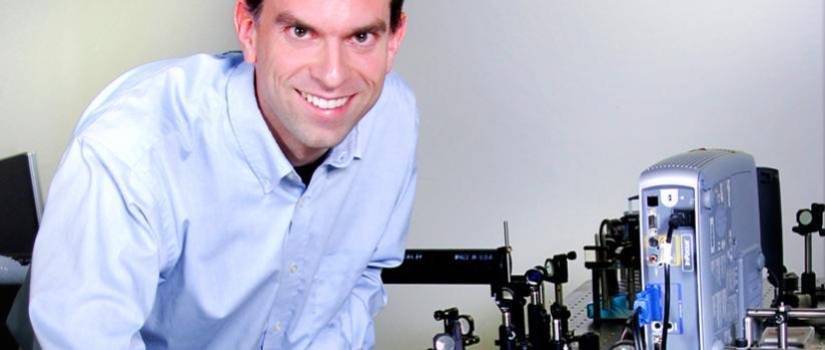The choice came down to English, history or physics. “I picked physics, frankly, because it was harder for me,” Crawford says.
Students in USC’s College of Arts & Sciences who want to join in Crawford’s ground-breaking research need to have a similar work ethic. Crawford ends up mentoring two or three undergraduates through research projects at the USC Smart State Center for Experimental Nanoscale Physics each year. He says those students pick themselves more than him selecting them.
“Most of the time, it involves a trial period during the semester or during the summer,” Crawford says. “I let them do work, and it sort of naturally determines itself. Those who are into it, get into it, and it’s obvious.”
The undergraduates end up working alongside graduate students in the nanotechnology lab, and they do amazing work. Several have published papers in major journals before earning their undergraduate degree.
“They come in and they are brilliant and they are gung-ho,” Crawford says. “Just because they have not had years of graduate-level theoretical physics does not mean they cannot use their hands and do the lab work. They can exercise the creative side of science and discover something new. That is the fun right; that is why we do it.”
The physics fun started for Crawford when he took the more difficult path at Haverford (Pa.) College, which led to Master’s and PhD work at the University of Colorado. Crawford came to USC a decade ago, leaving a private sector job with Seagate Research, the leading manufacturer of computer disk drives.
He never had envisioned himself as an academic, but he came to a realization at Seagate. He had too many ideas he wanted to try and not enough time to test them all himself in the lab. “I had more ideas than I had bandwidth,” he says.
In the academic environment, he could mentor graduate and undergraduate students to run with his ideas in the lab. Joining the new Smart State Center seemed ideal.
“Building a culture of research excellence and helping students to do research and to like science seemed like the place for me,” Crawford says. “You can think of it as building the human infrastructure around a program that can be excellent.”
The program begins in the classroom, where Crawford believes hands-on learning is crucial. His optics students, for instance, must demonstrate mastery in 15 minute skills demos where they, for example, construct a telescope from a set of lenses and determine its resulting magnification.
The program blossoms in the nanotechnology lab, where researchers harness the potential for the tiny particles at the nano scale, just larger than the atom. Because of that elemental scale, nanotechnology research can head in unlimited directions. Crawford’s work has focused on an underappreciated aspect of the computer disk drive.
“Most people do not realize, a disk drive is a platter that consists of billions of five-nanometer refrigerator magnets, and each magnet is magnetized by an electromagnet, which is the recording head,” Crawford explains.
Children’s toys long have used magnetism to create patterns with iron filings. The same process can be done, but at the nano-particle level, using the tiny magnets in a disk drive. USC researchers working with Crawford have developed methods for programming those tiny magnets to create images in a thin ferrous fluid spread on top of a hard drive. Those images can then be replicated on a thin piece of removable tape. USC holds the patent on the process.
“We can turn a disk drive into a factory,” Crawford says. “It has the potential for revolutionary low cost manufacturing. … It is like a small printer spitting out things, but we have to print out things that people use.”
Creating better fiber optics is one possibility. A USC-based startup, MagAssemble LLC, has been formed to explore that route.
The options for nanotechnology research in general are limitless. The cure for cancer or the solution to the world’s energy problem likely will bubble up from nanotechnology, Crawford says.
“It is how the human species is going to evolve,” Crawford says. “One of the secrets to keeping our species going is going to be solving problems in biology and energy with creative science and engineering. We have only begun to explore what is out there.”
